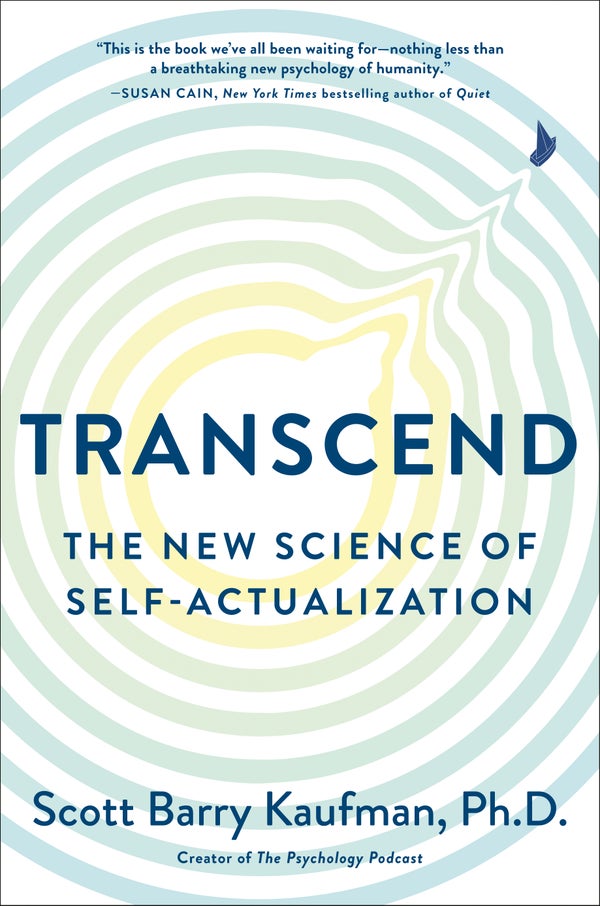This article was published in Scientific American’s former blog network and reflects the views of the author, not necessarily those of Scientific American
"In some ways suffering ceases to be suffering at the moment it finds a meaning." —Viktor Frankl, Man’s Search for Meaning
Kintsugi is a centuries-old Japanese art of fixing cracked pottery. Rather than hide the cracks, the technique involves rejoining the broken pieces with lacquer mixed with powdered gold, silver, or platinum. When put back together, the whole piece of pottery looks beautiful as ever, even while owning its broken history.
Many people are wondering at this time in history whether we will have a second life. When put back together, will we recover with dignity and grace? The science suggests that not only will we recover, but we will demonstrate the immense human capacity for resiliency and growth.
On supporting science journalism
If you're enjoying this article, consider supporting our award-winning journalism by subscribing. By purchasing a subscription you are helping to ensure the future of impactful stories about the discoveries and ideas shaping our world today.
From Resiliency to Growth
In his seminal 2004 paper, clinical psychologist George Bonanno argued for a broader conceptualization of stress responding. Defining resilience as the ability of people who have experienced a highly life-threatening or traumatic event to maintain relatively stable, healthy levels of psychological and physical functioning, Bonanno reviewed a wealth of studies showing that resilience is actually common, that it is not the same as the simple absence of psychopathology, and that it can be attained through multiple, sometimes unexpected, routes. Considering that approximately 61 percent of men and 51 percent of women in the United States report at least one traumatic event in their lifetime, the human capacity for resilience is quite remarkable.
In fact, many who experience trauma—such as being diagnosed with a chronic or terminal illness, losing a loved one, or experiencing sexual assault—not only show incredible resilience but actually thrive in the aftermath of the traumatic event. Studies show that the majority of trauma survivors do not develop PTSD, and a large number even report growth from their experience. Richard Tedeschi and Lawrence Calhoun coined the term “posttraumatic growth” to capture this phenomenon, defining it as the positive psychological change that is experienced as a result of the struggle with highly challenging life circumstances.
These seven areas of growth have been reported to spring from adversity:
Greater appreciation of life
Greater appreciation and strengthening of close relationships
Increased compassion and altruism
The identification of new possibilities or a purpose in life
Greater awareness and utilization of personal strengths
Enhanced spiritual development
Creative growth
To be sure, most people who experience posttraumatic growth would certainly prefer to have not had the trauma, and very few of these domains show more growth after trauma compared to encountering positive life experiences. Nevertheless, most people who experience posttraumatic growth are often surprised by the growth that does occur, which often comes unexpectedly, as the result of an attempt at making sense of an unfathomable event.
Rabbi Harold Kushner put it well as he reflected on the death of his son:
I am a more sensitive person, a more effective pastor, a more sympathetic counselor because of Aaron’s life and death than I would ever have been without it. And I would give up all of those gains in a second if I could have my son back. If I could choose, I would forgo all of the spiritual growth and depth which has come my way because of our experiences. . . . But I cannot choose.
Make no doubt: trauma shakes up our world and forces us to take an- other look at our cherished goals and dreams. Tedeschi and Calhoun use the metaphor of the seismic earthquake: we tend to rely on a particular set of beliefs and assumptions about the benevolence and controllability of the world, and traumatic events typically shatter that worldview as we become shaken from our ordinary perceptions and are left to rebuild ourselves and our worlds.
But what choice do we have? As Austrian psychiatrist Viktor Frankl put it, “When we are no longer able to change a situation, we are challenged to change ourselves.” In recent years, psychologists have begun to understand the psychological processes that turn adversity into advantage, and what is becoming clear is that this “psychologically seismic” restructuring is actually necessary for growth to occur. It is precisely when the foundational structure of the self is shaken that we are in the best position to pursue new opportunities in our lives.
Similarly, the Polish psychiatrist Kazimierz Dabrowski argued that “positive disintegration” can be a growth-fostering experience. After studying a number of people with high psychological development, Dabrowski concluded that healthy personality development often requires the disintegration of the personality structure, which can temporarily lead to psychological tension, self-doubt, anxiety, and depression. However, Dabrowski believed this process can lead to a deeper examination of what one could be and ultimately higher levels of personality development.
A key factor that allows us to turn adversity into advantage is the extent to which we fully explore our thoughts and feelings surrounding the event. Cognitive exploration—which can be defined as a general curiosity about information and a tendency toward complexity and flexibility in information processing—enables us to be curious about confusing situations, increasing the likelihood that we will find new meaning in the seemingly incomprehensible.
To be sure, many of the steps that lead to growth after trauma go against our natural inclinations to avoid extremely uncomfortable emotions and thoughts. However, it’s only through shedding our natural defense mechanisms and approaching the discomfort head on, viewing everything as fodder for growth, that we can start to embrace the inevitable paradoxes of life and come to a more nuanced view of reality.
After a traumatic event, whether a serious illness or the loss of a loved one, it’s natural to stew over the event, constantly thinking about what happened, replaying the thoughts and feelings over and over. Rumination is often a sign that you are working hard to make sense of what happened and are actively tearing down old belief systems and creating new structures of meaning and identity.
While rumination typically begins as automatic, intrusive, and repetitive, over time such thinking becomes more organized, controlled, and deliberate. This process of transformation can certainly be excruciating, but rumination, in conjunction with a strong social support system and other outlets for expression, can be very beneficial to growth and enable us to tap into deep reservoirs of strength and compassion we never knew existed within us.
Likewise, emotions such as sadness, grief, anger, and anxiety are common responses to trauma. Instead of trying everything we can to inhibit or “self-regulate” those emotions, experiential avoidance—avoiding feared thoughts, feelings, and sensations—paradoxically makes things worse, reinforcing our belief that the world is not safe and making it more difficult to pursue valued long-term goals. Through experiential avoidance, we shut down our exploratory capacities, thereby missing out on many opportunities for generating positive experiences and meaning. This is a core theme of acceptance and commitment therapy (ACT), which helps people increase their “psychological flexibility.” By embracing psychological flexibility, we face the world with exploration and openness and are better able to react to events in the service of our chosen values.
Consider a study conducted by Todd Kashdan and Jennifer Kane, in which they assessed the role of experiential avoidance in posttraumatic growth in a sample of college students. In this sample, the most frequently reported traumas included the sudden death of a loved one, motor vehicle accidents, witnessing violence in the home, and natural disaster. Kashdan and Kane found that the greater the distress, the greater the post- traumatic growth—but only in those with low levels of experiential avoidance. Those reporting greater distress and little reliance on experiential avoidance reported the highest levels of growth and meaning in life.
The finding flipped for those resorting to experiential avoidance, and greater distress was associated with lower levels of posttraumatic growth and meaning in life. The study adds to a growing literature showing that people with low levels of anxiety coupled with low levels of experiential avoidance (i.e., high levels of psychological flexibility) report an enhanced quality of life. But this study also suggests that there is increased meaning in life too.
The increased meaning can be great fodder for creative expression.
Creating from Trauma
The link between disadvantage and creativity has a long and distinguished history, but now scientists are starting to unravel the mysteries behind this link. Clinical psychologist Marie Forgeard asked people to report on the most stressful experiences of their lives and to indicate which ones had the biggest impact. The list of adverse events included natural disaster, illness, accidents, and assault.
Forgeard found that the form of cognitive processing was critical in explaining growth after trauma. Intrusive forms of rumination caused a decline in multiple areas of growth, whereas deliberate rumination led to an increase in five domains of posttraumatic growth. Two of those domains—positive changes in relationships and increases in perceptions of new possibilities in one’s life—were associated with increased perceptions of creative growth.
In her book When Walls Become Doorways: Creativity and the Transforming Illness, Tobi Zausner presented her analysis of the biographies of eminent painters who suffered from physical illnesses. Zausner concluded that such illnesses led to the creation of new possibilities for their art by breaking old habits, provoking disequilibrium, and forcing the artists to generate alternative strategies to reach their creative goals.
Taken together, the research and anecdotes support the potentially immense benefit of engaging in art therapy or expressive writing to help facilitate the rebuilding process after trauma. Writing about a topic that triggers strong emotions ("expressive writing") for just fifteen to twenty minutes a day has been shown to help people create meaning from their stressful experiences and better express both their positive and negative emotions.
I know times are difficult right now, and it may seem so far away before we can become whole again. Nevertheless, the latest research on postraumatic growth can offer you some hope that we will most likely come out stronger, more creative, and with a deeper sense of meaning that we ever had before.
--
From TRANSCEND by Scott Barry Kaufman, Ph.D. published by TarcherPerigee, an imprint of Penguin Publishing Group, a division of Penguin Random House. LLC Copyright (c) 2020 by Scott Barry Kaufman

